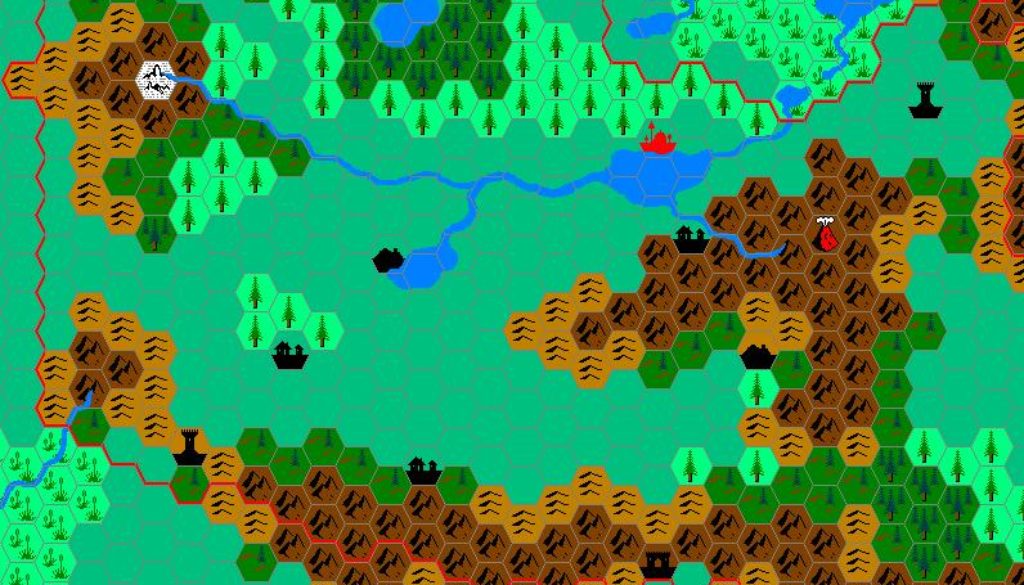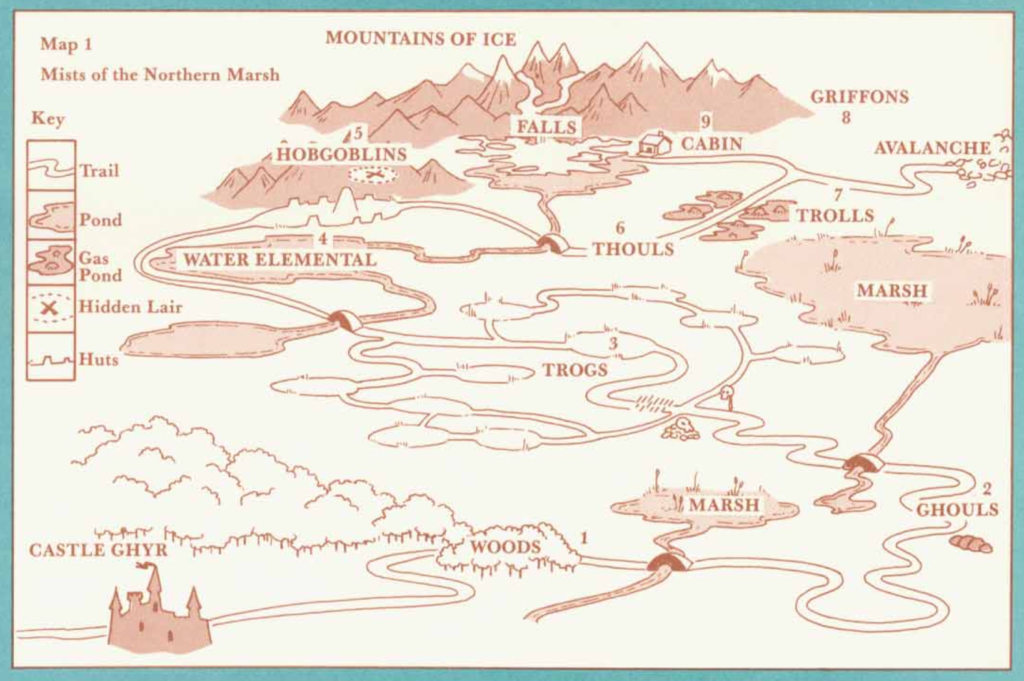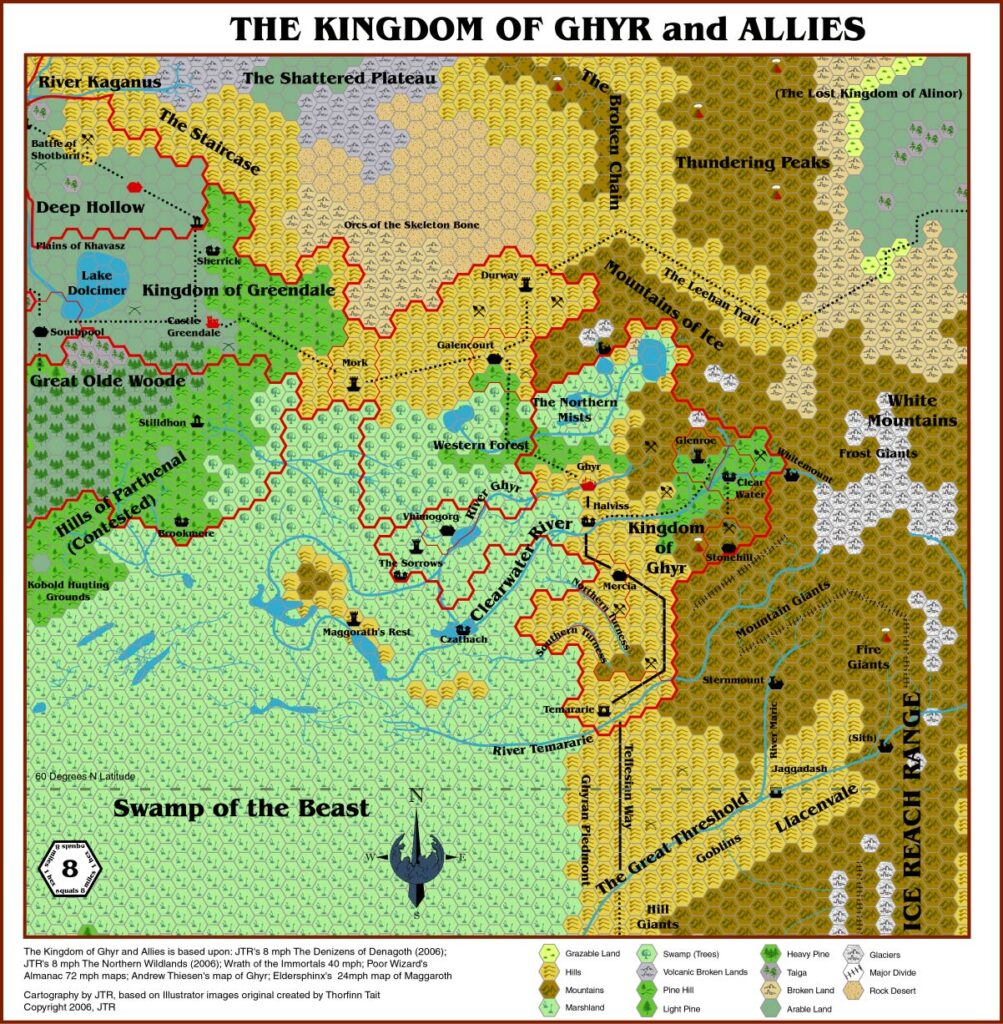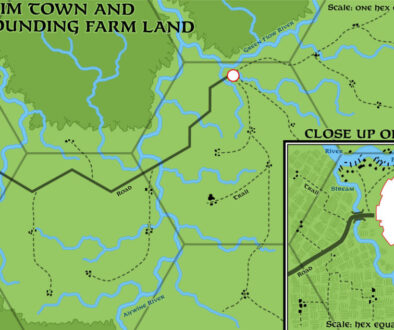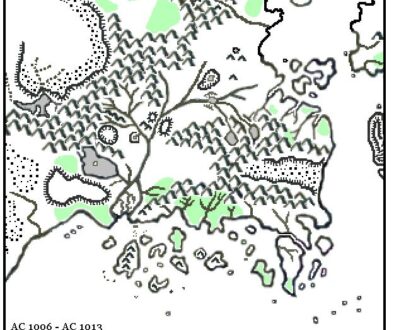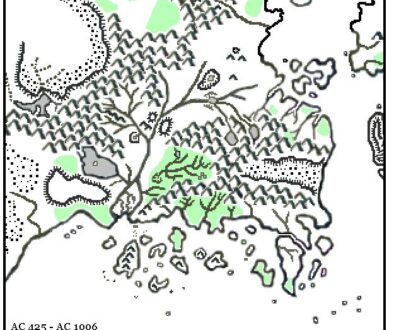Cthulhudrew’s Ghyr, 8 miles per hex
Andrew’s 2000 work-in-progress map was the first to adapt XL-1 Quest for the Heartstone’s Kingdom of Ghyr, explicitly placing it in Mystara. His chosen location was “just to the north of the Denagoth plateau” detailed in X11. The original map was more of a sketch than a map, and lacked any sort of scale, so this is indeed an adaptation rather than a straight drop of the kingdom into Mystara.
Although there have been a number of other proposed placements for Ghyr, Andrew’s has proved popular in the community, with both JTR’s Gaz F and Ramelin Mystara adopting it. But there may well be more to see of this nation in the near future…
Fan-made Map by Andrew Theisen (May 2000)
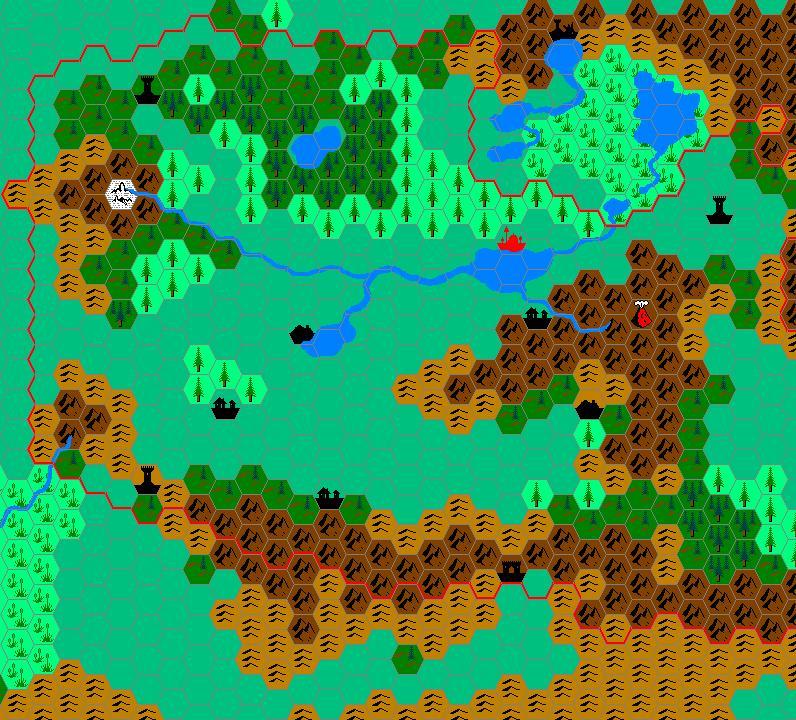
This is an original map created by one of Mystara’s excellent fan cartographers. For more information on the cartographer, including a gallery of all their maps, see also Appendix M: Mappers of Mystara.
Work in progress map: This map is incomplete. It appears here in the most recent state available, but it may be missing certain elements.
Sources
- XL-1 Quest for the Heartstone (1984) (PDF at DriveThruRPG)
- Map 1: Mists of the Northern Marsh
- X11 Saga of the Shadow Lord (1986) (PDF at DriveThruRPG)
Secondary Sources
- The Kingdom of Ghyr from the Mystara Mailing List posted 23 January 1999 (Vaults of Pandius)
References
- All of Andrew’s maps at the Atlas of Mystara
- Andrew’s entry in Appendix M: Mappers of Mystara (upcoming)
- Andrew’s author page at the Vaults of Pandius
Chronological Analysis
This is a fan-made map. It was published in May 2000. The updated Atlas version of this map is not yet available. See also Appendix C for annual chronological snapshots of the area. For the full context of this map in Mystara’s publication history, see the upcoming Let’s Map Mystara 2000. (Please note that it may be some time before the project reaches this point.)
The following lists are from the Let’s Map Mystara project. Additions are new features, introduced in this map. Revisions are changes to previously-introduced features. Hex Art & Fonts track design elements. Finally, Textual Additions are potential features found in the related text. In most cases, the Atlas adopts these textual additions into updated and chronological maps.
Coming Soon

